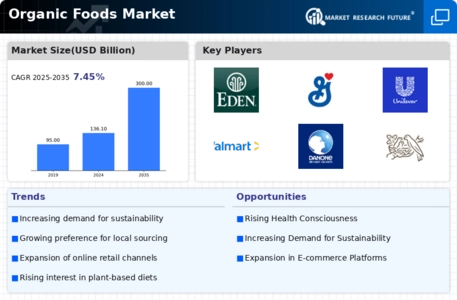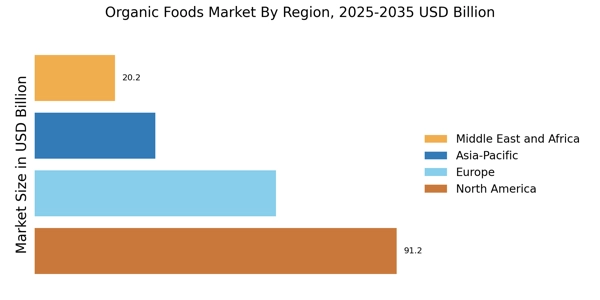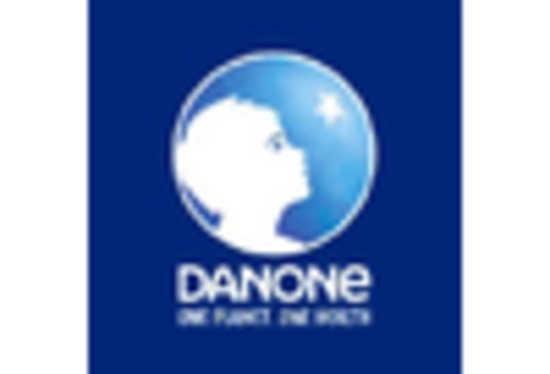Changing Consumer Lifestyles
The Organic Foods Market is significantly influenced by changing consumer lifestyles, particularly among younger demographics. Millennials and Generation Z are increasingly prioritizing health and wellness, leading to a surge in the consumption of organic foods. This demographic shift is reflected in market data, which shows that younger consumers are more likely to seek out organic options when shopping. Additionally, the rise of plant-based diets and the increasing popularity of clean eating are further propelling the demand for organic products. As these lifestyle trends continue to gain traction, the Organic Foods Market is expected to adapt and innovate, offering a wider array of organic options to meet the evolving preferences of health-conscious consumers.
Increased Focus on Sustainability
Sustainability has emerged as a pivotal driver within the Organic Foods Market. Consumers are increasingly concerned about the environmental impact of their food choices, leading to a preference for organic products that are produced using sustainable farming practices. This shift is evidenced by a significant rise in the number of certified organic farms, which has increased by over 30% in recent years. The Organic Foods Market is thus positioned to benefit from this trend, as consumers seek to support brands that align with their values regarding environmental stewardship. Furthermore, the emphasis on sustainability is likely to influence purchasing decisions, with consumers willing to pay a premium for organic products that contribute to ecological preservation.
Rising Demand for Organic Products
The Organic Foods Market experiences a notable increase in demand as consumers become more health-conscious. This trend is driven by a growing awareness of the benefits associated with organic foods, such as reduced exposure to pesticides and enhanced nutritional value. Recent data indicates that the organic food sector has seen a compound annual growth rate of approximately 10% over the past few years. This rising demand is not limited to fruits and vegetables but extends to dairy, meat, and packaged goods, reflecting a broader shift in consumer preferences. As more individuals prioritize their health and well-being, the Organic Foods Market is likely to continue expanding, catering to a diverse range of dietary needs and preferences.
Regulatory Support for Organic Farming
Regulatory frameworks play a crucial role in shaping the Organic Foods Market. Governments worldwide are increasingly implementing policies that support organic farming practices, including subsidies and certification programs. These initiatives not only promote the growth of organic agriculture but also enhance consumer trust in organic products. Recent statistics indicate that countries with robust regulatory support have seen a marked increase in organic food sales, suggesting a direct correlation between policy initiatives and market growth. As regulatory environments continue to evolve, they are likely to provide a favorable landscape for the Organic Foods Market, encouraging more farmers to transition to organic practices and expanding the availability of organic products in the marketplace.
Technological Advancements in Agriculture
Technological innovations are reshaping the Organic Foods Market, enhancing production efficiency and product quality. Advances in agricultural technology, such as precision farming and biotechnology, enable organic farmers to optimize yields while adhering to organic standards. These innovations not only improve the sustainability of organic farming practices but also help in meeting the increasing consumer demand for organic products. For instance, the integration of data analytics in farming operations has shown potential in reducing resource waste and improving crop resilience. As these technologies continue to evolve, they are likely to play a crucial role in the growth of the Organic Foods Market, ensuring that supply can keep pace with rising consumer interest.


















Leave a Comment